In the vibrant world of backyard birds, few species display the intelligence and social complexity of the blue jay. These striking corvids are known for their bold personalities and intricate behaviors, making them fascinating subjects for bird enthusiasts and nature lovers alike.
Blue jays form tight-knit family units, often working together to protect their space from predators. They use loud alarm calls and even mimic hawks to ward off threats, showcasing their strategic thinking. Their strong pair bonds and shared knowledge of their surroundings make them highly effective guardians of their home range.
Beyond defense, these birds play a crucial role in the ecosystem. By caching thousands of acorns, they help regenerate forests, proving their importance extends far beyond their striking blue feathers.
Key Takeaways
- Blue jays use teamwork and vocal signals to protect their space.
- They form lifelong pair bonds and share territorial knowledge.
- Their acorn-caching habits contribute to forest growth.
- They adapt well to human environments, often visiting feeders.
- Their intelligence rivals that of other corvids like crows and ravens.
The Intelligent Forager: Blue Jays’ Survival Strategies
Blue jays demonstrate remarkable intelligence through their complex foraging behaviors. Their ability to cache food, assess quality, and deceive competitors makes them master survivalists.

Caching Acorns and Shaping Forests
These birds are nature’s gardeners. A single blue jay can bury 4,897 acorns in just three days, often traveling over 2km to disperse seeds. Their preference for pin oak acorns directly influences tree diversity in forests.
| Blue Jay Caching Facts | Impact |
|---|---|
| 4,897 acorns cached | Oak forest expansion |
| 2km seed dispersal | Enhanced biodiversity |
| 60% retrieval rate | Natural reforestation |
The Nut Assessment Ritual
Before storing, jays perform a meticulous check. They shake nuts to detect weevil larvae and weigh them in their beaks to ensure quality. This ritual minimizes spoiled caches and maximizes winter survival.
Mimicry and Deception at Feeders
Blue jays imitate hawk calls to scare off other birds from feeders. Naturalist Stan Tekiela observed this tactic clears space for their own feeding. Their opportunistic diet also includes insects and eggs for calcium.
From forests to backyards, these birds prove their role as both protectors and propagators. Their strategies ensure survival while benefiting ecosystems.
Neighborhood Watch: How Blue Jays Defend Their Territory
When danger looms, blue jays transform into nature’s alarm system, rallying allies against threats. Their coordinated efforts protect not just their own kind but entire bird communities.
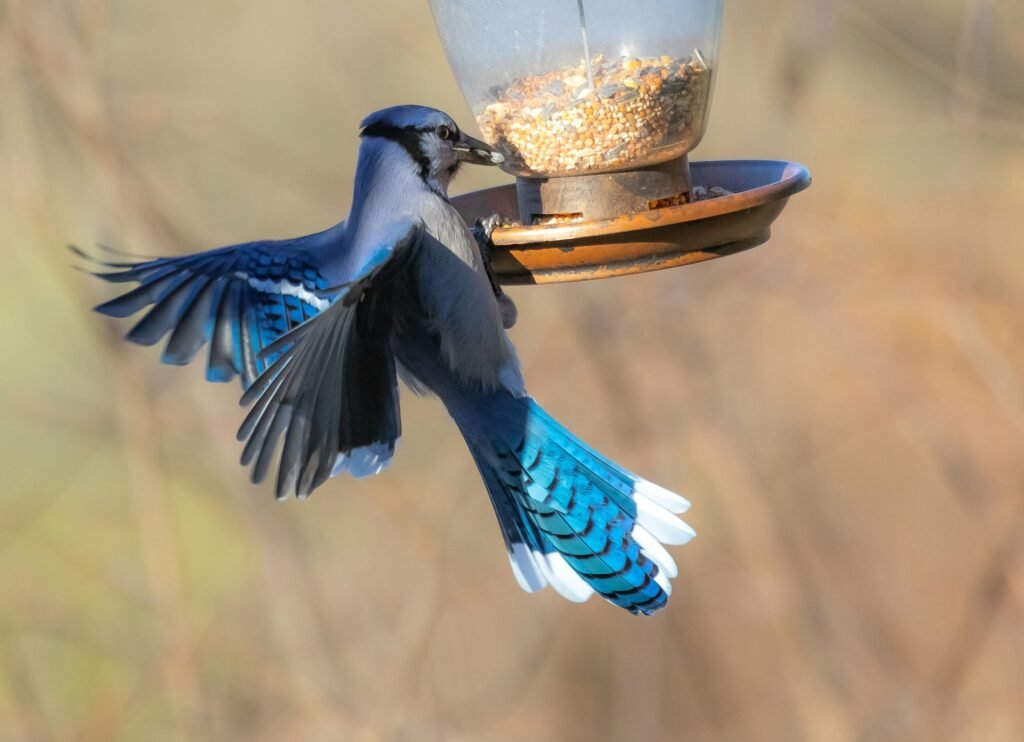
Mobbing Predators as a Collective
These birds aggressively swarm hawks, owls, and even snakes, diving and screeching to drive them away. Smaller species like warblers benefit from this group defense, often hiding while jays distract the threat.
Jays also cache eggshells near nests, a sign of year-round territorial vigilance. This behavior deters predators and marks their domain.
Vocal Alarms and Regional Dialects
Their harsh “jeering” calls alert others to danger, functioning like a forest-wide broadcast. Remarkably, dialects vary by region—some jays even mimic local bird sounds to enhance warnings.
Using a specialized syrinx, they produce two sounds at once, creating layered alarms. This adaptability helps them communicate across dense woodlands.
Beyond defense, their seed-caching habits shaped oak forests during the Ice Age. Today, they remain vigilant sentinels, proving their role as ecosystem stewards.
Whispers in the Canopy: The Secret Social Lives of Blue Jays
Beyond their bold calls and striking colors, blue jays share intimate bonds rarely seen in the avian world. These birds form lifelong partnerships, working together to raise young and defend their space. Their social complexity shines brightest during dusk, when loud alarms fade into whispered exchanges.
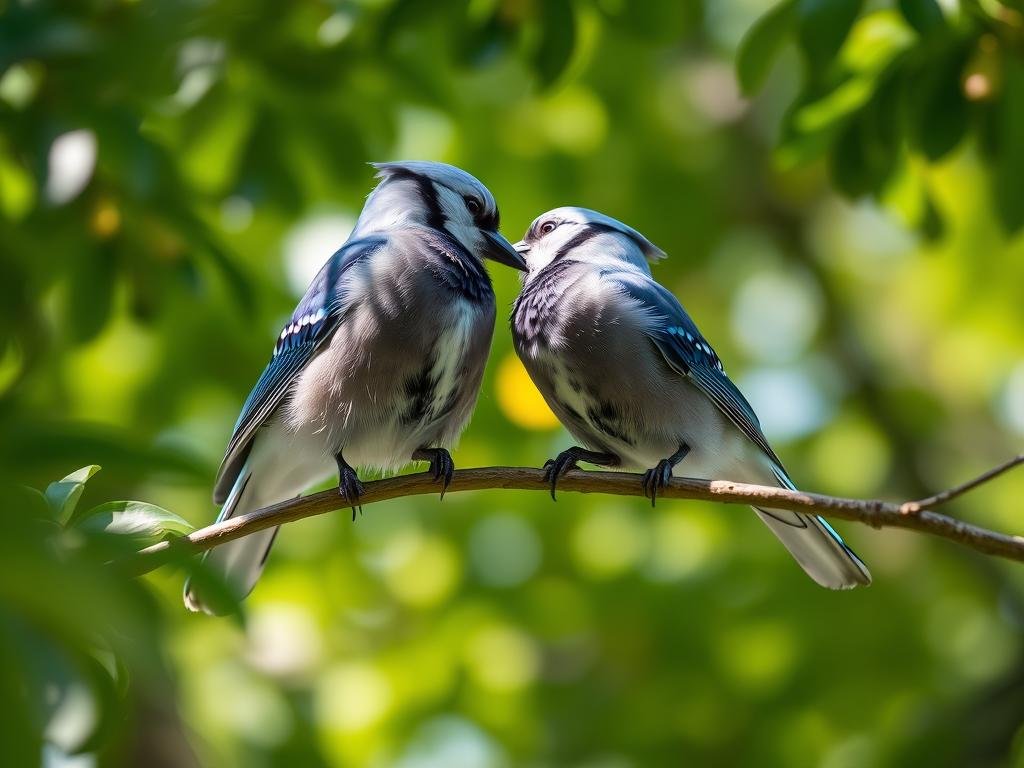
Pair Bonding and Lifelong Partnerships
Blue jays mate for life, often reuniting each spring to rebuild nests in sugar maples or oaks. Partners share duties equally—gathering twigs, incubating eggs, and feeding hatchlings. This teamwork boosts survival rates in harsh climates.
Studies show bonded pairs cache seeds together, remembering thousands of locations. Their cooperation ensures food access during winter months.
The Mystery of the Whisper Song
At twilight, jays switch from raucous jeers to soft chucks and fluid clicks. These whisper songs strengthen pair bonds, often exchanged while perched close. Researchers believe the private calls reveal emotional depth, akin to human whispers.
| Blue Jay Vocalizations | Purpose |
|---|---|
| Loud daytime calls | Alarms, territory defense |
| Whisper songs | Pair bonding, intimacy |
| Mimicked hawk cries | Feeder dominance |
Spring nesting pairs often clutch 4-5 eggs, with both parents tending the brood. Their quiet dusk rituals contrast sharply with daytime vigilance, showcasing a dual nature—fierce protectors by day, tender companions by night.
Inviting Blue Jays to Your Backyard
Creating a welcoming space for these intelligent birds requires thoughtful planning. With the right approach, your outdoor area can become a thriving habitat that attracts and sustains them year-round.

Best Foods to Earn Their Trust
Blue jays have specific dietary preferences that make certain feeders more effective. Platform-style feeders work best, as they accommodate their size and feeding habits.
These birds can carry up to 11 peanuts in their crop at once, making this a top choice. Black oil sunflower seeds and cracked corn also rank among their favorites.
For variety, consider adding suet cakes during colder months. This high-energy food helps them survive harsh weather.
Creating a Safe Habitat
Native trees like oaks and red maples provide essential cover and natural food sources. Planting these species creates a familiar environment that makes jays feel secure.
Evergreen shrubs offer year-round protection from predators and harsh elements. Position them near feeding areas for quick escape routes.
Don’t forget water sources. A clean birdbath serves dual purposes—drinking and bathing. Change the water regularly to prevent disease.
Why Chemicals Are a Dealbreaker
Pesticides and herbicides pose serious threats to blue jays and other wildlife. These chemicals can contaminate their food supply and damage their health.
Rodenticides are particularly dangerous. Jays may consume poisoned rodents, leading to secondary poisoning. Opt for natural pest control methods instead.
For those serious about creating a bird-friendly space, avoiding synthetic lawn treatments is crucial. These products eliminate the insects that form part of their natural diet.
Consistency matters when building trust. Regular feeding schedules and clean feeding stations encourage repeat visits. Over time, you may witness their fascinating behaviors up close.
Beyond the Bully Reputation: Ecological Benefits of Blue Jays
Ecological research reveals blue jays as unsung heroes of North American woodlands. Their behaviors sustain entire ecosystems, from seed dispersal to predator deterrence. These intelligent birds prove that first impressions often miss deeper environmental contributions.
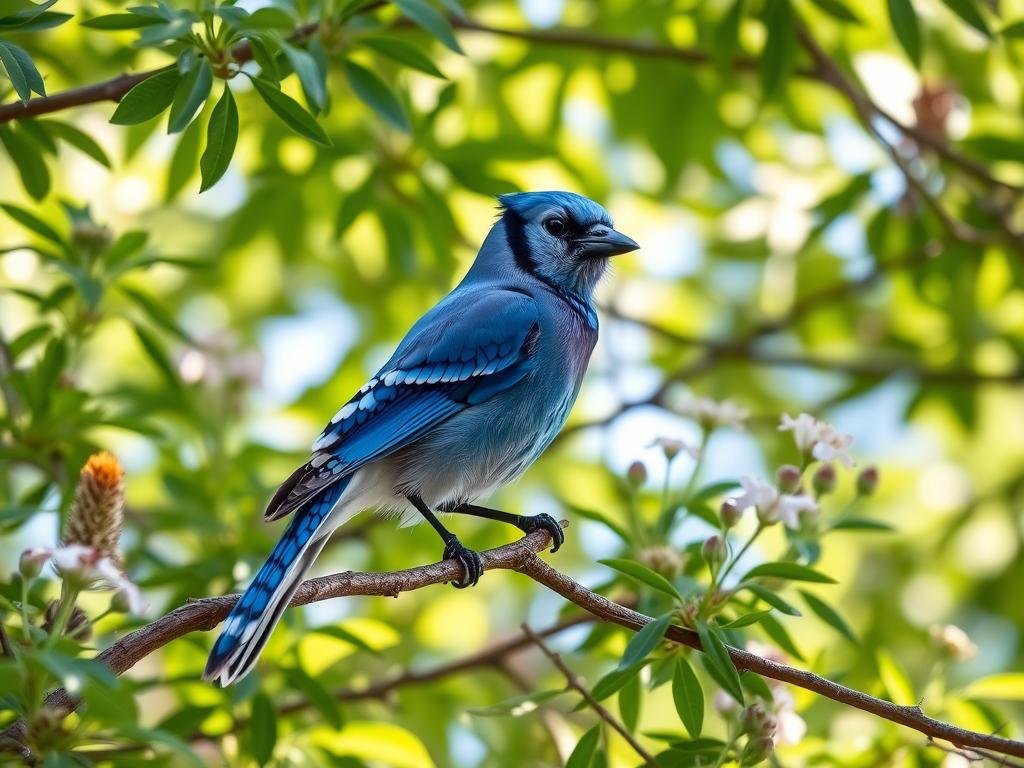
Accidental Forest Gardeners
After the last Ice Age, jays helped regenerate oak forests across the continent. A single bird can transport over 50 acorns daily, burying them up to 2km from source trees. Forgotten caches become new saplings, making them nature’s most effective reforestation agents.
Studies show they’ve dispersed at least 50 oak species, including vital varieties like white and red oak. Their selective caching favors viable seeds, ensuring higher germination rates than wind dispersal.
| Oak Species Dispersed | Ecological Impact |
|---|---|
| White oak (Quercus alba) | Supports 500+ insect species |
| Red oak (Quercus rubra) | Key food source for wildlife |
| Pin oak (Quercus palustris) | Prevents soil erosion |
Protecting Smaller Birds from Hawks
Their loud alarm calls create safer spaces for warblers, orioles, and other vulnerable birds. When jays mob predators like hawks, smaller species gain crucial escape time. This behavior showcases their unexpected role in maintaining ecosystem balance.
Joseph F. Gray observed their calcium-seeking habits, where they consume eggshells and snails. This dietary need incidentally controls garden pests, benefiting nearby vegetation.
Urban adaptability makes them valuable for backyard habitats. Their insect consumption reduces pest populations naturally, eliminating the need for harmful pesticides.
From forest regeneration to neighborhood pest control, these corvids demonstrate that ecological value often hides behind bold personalities. Their contributions remind us that every species plays interconnected roles in nature’s complex web.
Conclusion
Few creatures balance fierceness and nurturing as skillfully as these vibrant corvids. Beyond their bold reputation, they sculpt forests and shield smaller birds, proving their ecological worth. Studies reveal only 1% consume eggs, debunking the “bully” myth.
Their whisper songs at dusk mirror our own need for quiet connection with nature. By avoiding pesticides in your backyard, you safeguard their 15-year lifespans—and the ecosystems they sustain.
Next time you spot blue jays, listen closely. Their lives, rich with contradiction, remind us that even the loudest voices hold softness. As defenders of ecosystems, they invite us to see the world anew.

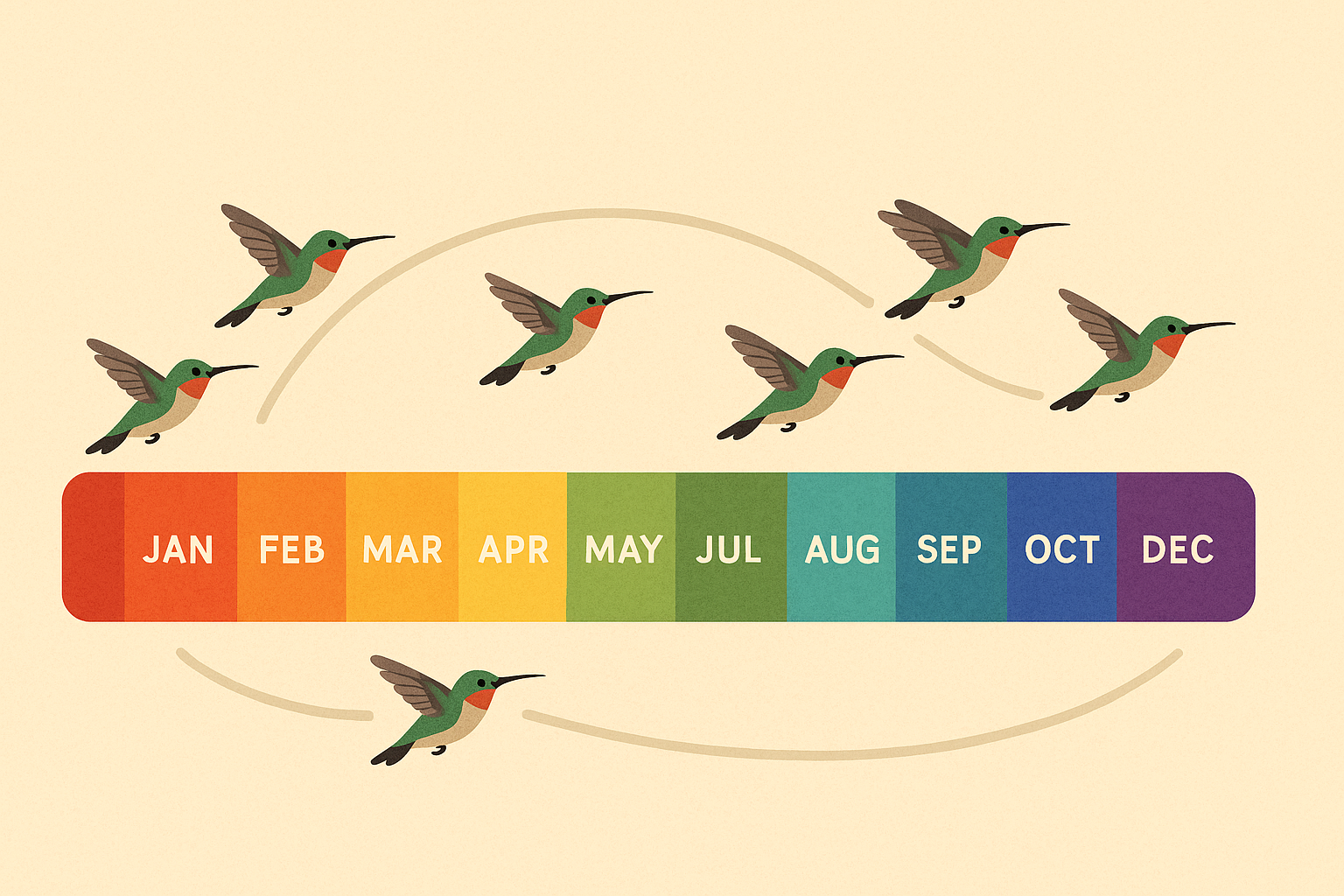
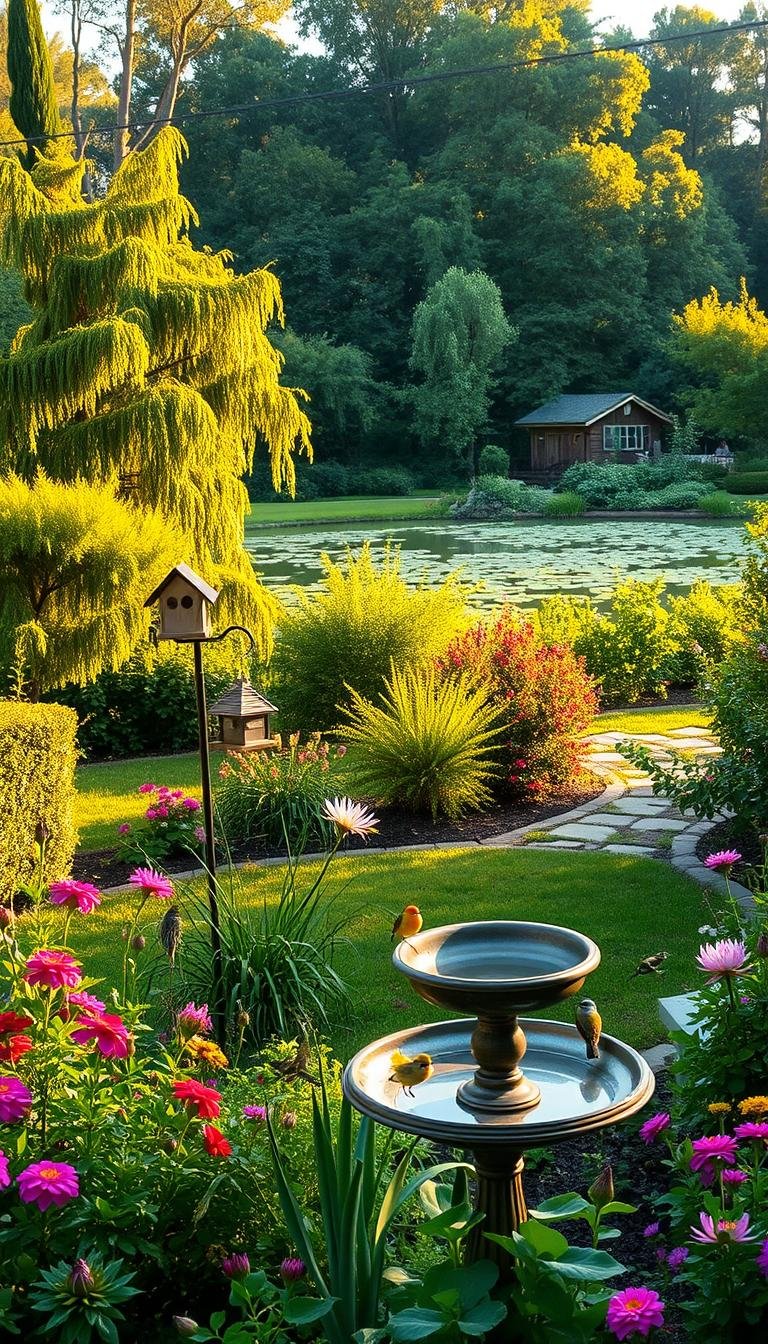
0 Comments